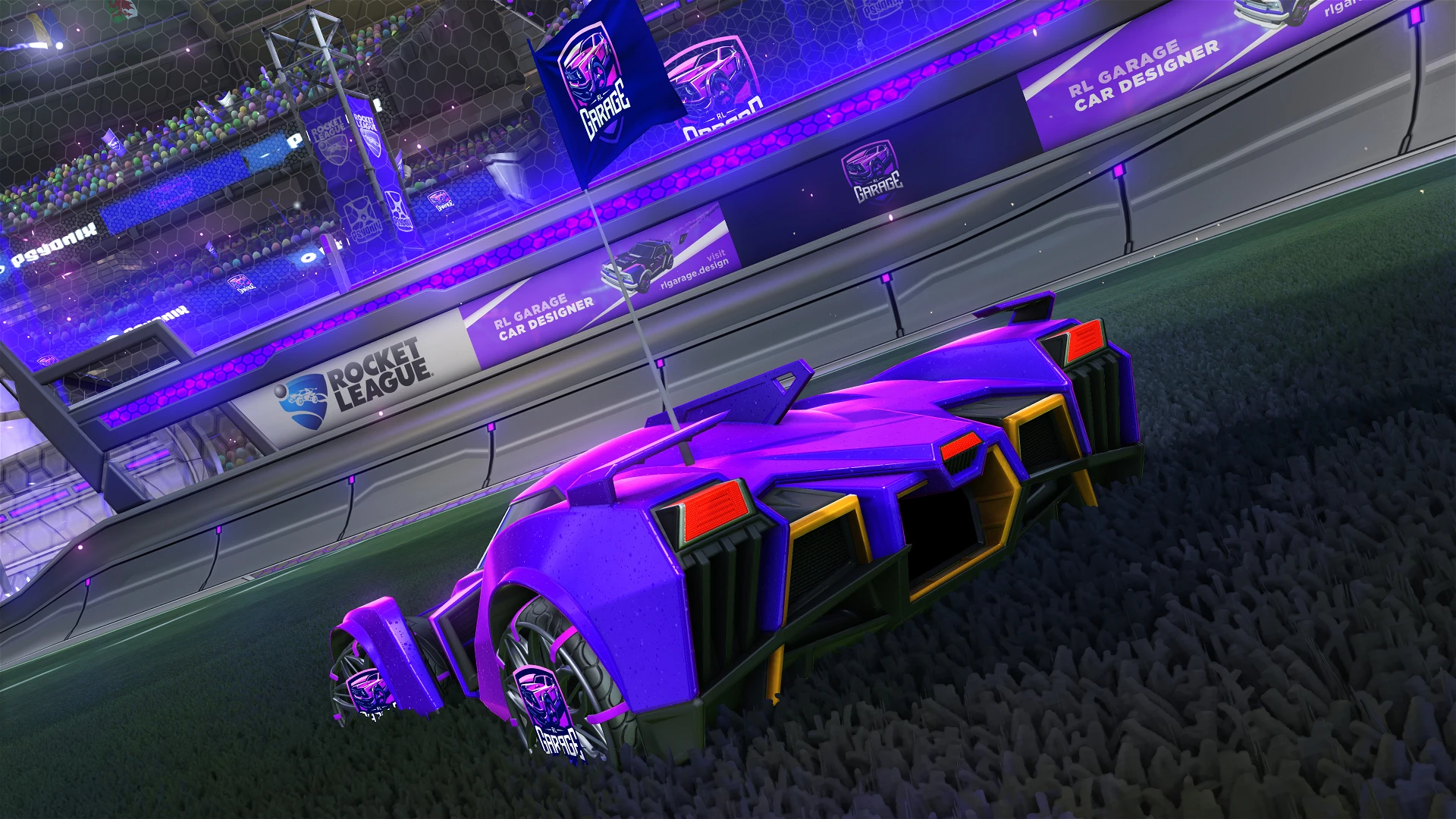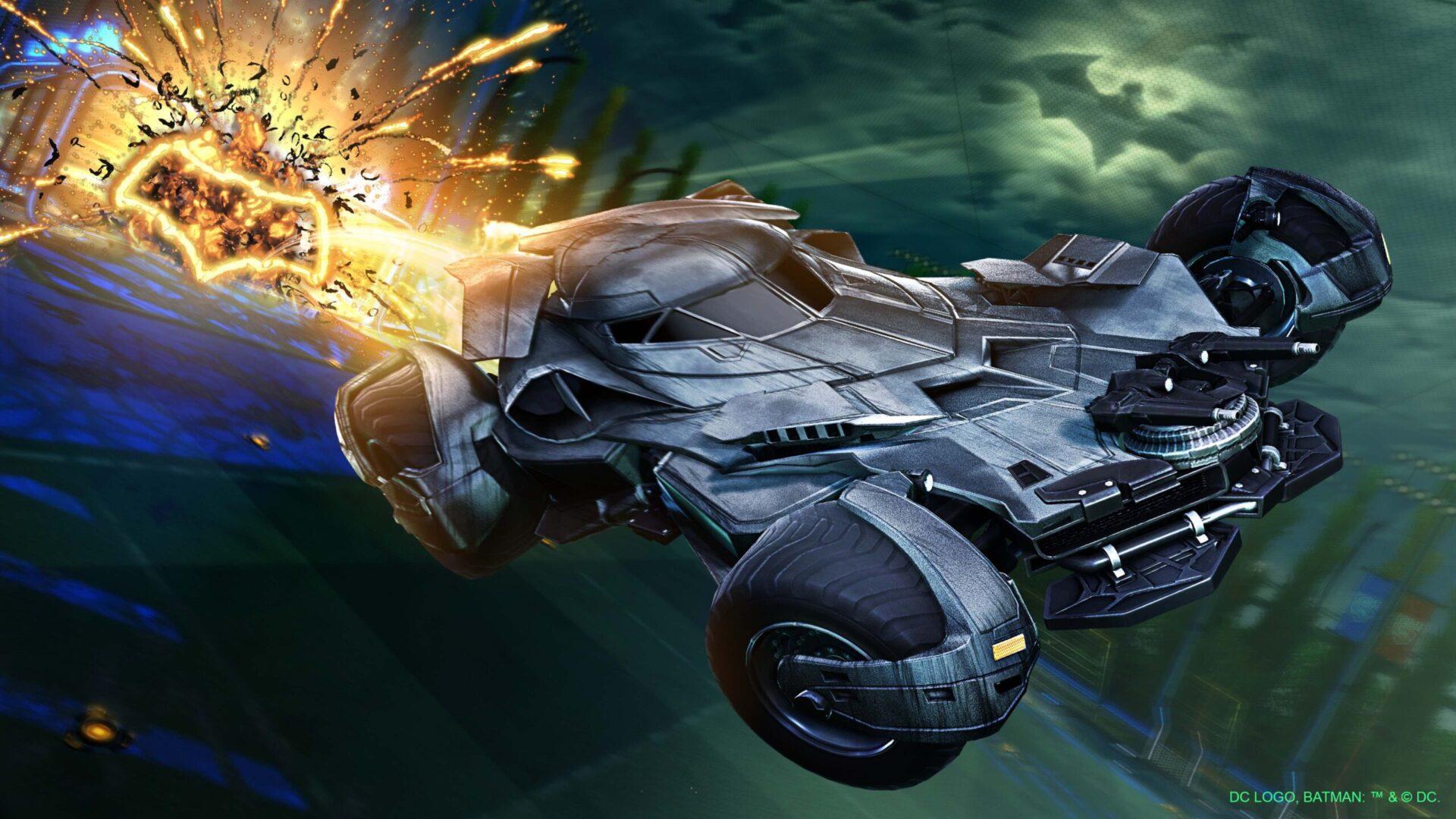Understanding rocket league hitboxes is crucial for competitive success in 2025. Every car in Rocket League belongs to one of six distinct hitbox categories, each offering unique advantages and gameplay characteristics. This comprehensive guide breaks down the key differences between hitbox types, explores the popular hybrid hitbox Rocket League options, and provides a detailed Rocket League car hitbox comparison to help you choose the perfect vehicle for your playstyle.
 Rocket League hitboxes are a crucial aspect of the game that you must understand to improve your gameplay (credits: Rocket League)
Rocket League hitboxes are a crucial aspect of the game that you must understand to improve your gameplay (credits: Rocket League)What Are Rocket League Hitboxes?
Rocket league hitboxes are invisible collision zones that determine how your car interacts with the ball, other players, and the environment. Since the standardization update in 2017, all cars fall into six primary categories: Octane, Dominus, Breakout, Hybrid, Plank, and Merc. These hitboxes directly influence aerial control, dribbling ability, shot power, and challenge consistency.
Each hitbox type has unique dimensions for height, width, and length, affecting fundamental mechanics like flip resets, flicks, and 50/50 challenges. Even if two cars look completely different, they may share identical hitbox properties and performance characteristics.
The Six Rocket League Hitbox Types
1. Octane
The Octane hitbox remains the most popular choice among professional players and casual gamers alike.
Strengths:
- Superior 50/50 challenge performance due to rounded collision model
- Excellent aerial responsiveness and control
- Best all-around hitbox for beginners and professionals
- Strong dribbling and flick potential
Weaknesses:
- Shortest reach for air-dribbles compared to longer hitboxes
- Limited range for certain advanced mechanics
Popular Octane Cars: Fennec, Octane, Dingo, Road Hog
 credits: Rocket League
credits: Rocket League2. Dominus
The Dominus hitbox excels in ground play and flick mechanics with its 127.93 length, 83.28 width, and 31.30 height. This longer, flatter profile makes it ideal for offensive players who prioritize powerful shots and precise ball control.
Strengths:
- Exceptional flick power and range
- Superior ground game performance
- Excellent for ceiling shots and corner plays
- Faster landing due to low profile
Weaknesses:
- Weaker performance in 50/50 challenges
- Less aerial height capability
- Harder defensive recoveries
Popular Dominus Cars: Dominus, Nissan Fairlady Z, BMW M240i, McLaren 570S
3. Hybrid
The hybrid hitbox Rocket League category represents a balanced compromise between Octane and Dominus characteristics. With dimensions of 127.02 length, 82.19 width, and 34.16 height, it offers versatility for players who want adaptability.
Strengths:
- Smooth air roll control
- Adequate flick potential with moderate challenge stability
- Great for freestylers and transitioning players
- Consistent flip reset capability due to flat contact surface
Weaknesses:
- Not top-tier in any specific mechanic
- Less specialized than pure Octane or Dominus options
Popular Hybrid Cars: Endo, Nissan Skyline, Tesla Cybertruck, Jäger 619 RS
4. Breakout
The Breakout hitbox is the longest in the game at 131.49 length, making it excellent for power shots and pinches. However, its narrow 80.53 width requires precise control.
Strengths:
- Longest reach for powerful shots
- Excellent for pinches and redirects
- Great for freestyling and advanced mechanics
- Superior leverage for certain shot angles
Weaknesses:
- Narrowest width makes it less forgiving
- Requires more precise timing and positioning
- Weaker in defensive situations
Popular Breakout Cars: Breakout, Animus GP, Cyclone, Samurai
 credits: Rocket League
credits: Rocket League5. Plank
The Plank hitbox features the lowest height at 29.39 but compensates with excellent width (84.67) and length (128.82). This configuration makes it ideal for specific aerial techniques and accurate shooting.
Strengths:
- Wide contact surface for consistent flip resets
- Excellent for accurate long-range shots
- Fast landing recovery due to low profile
- Good for ceiling play mechanics
Weaknesses:
- Poor ground control and dribbling
- Limited aerial finesse due to low height
- Challenging for defensive plays
Popular Plank Cars: Batmobile, Mantis, Sentinel
 credits: Rocket League
credits: Rocket League6. Merc
The Merc hitbox stands as the tallest option at 41.66 height, making it unique for specific playstyles focused on disruption and defensive play.
Strengths:
- Tallest hitbox for unique aerial angles
- Strong demolition and bump potential
- Good for defensive challenges
- Intimidation factor in casual play
Weaknesses:
- Very limited aerial finesse
- Clunky handling compared to other hitboxes
- Narrow width (76.71) reduces consistency
Popular Merc Cars: Merc, Battle Bus, Nomad
 credits: Sports Illustrated
credits: Sports IllustratedChoosing Your Ideal Rocket League Car based on its Hitbox
Selecting the right hitbox in Rocket League is a decision that depends on an understanding of both personal skill level and playstyle preference. For beginners, vehicles utilizing the Octane or Hybrid hitbox provide a forgiving learning environment, blending accessible control with balanced overall performance. Among these, the Fennec stands out thanks to its visual clarity, allowing newcomers to better judge ball contact and refine their fundamental mechanics. Mastery of these hitboxes can establish a solid foundation before exploring more specialized options.
As players grow more attuned to the game's mechanics and begin to develop preferences, the selection process becomes more strategic. Aggressive players often gravitate towards Dominus hitbox cars, such as the Nissan Fairlady Z or the classic Dominus, which excel in offensive play with exceptional flick power and ground dominance. Meanwhile, those who focus on sophisticated aerial maneuvers may favor Plank hitbox vehicles like the Batmobile or Mantis, prized for their broad, flat contact surfaces that facilitate advanced air control and flip resets.
Versatile competitors seeking well-rounded adaptability across various modes may find Hybrid hitbox Rocket League cars to be the ideal compromise, offering flexibility without sacrificing the unique attributes necessary for specialized play.
Which Rocket League Hitboxes You Prefer?
Understanding your rocket league hitboxes preference requires experimentation in training modes and casual matches. Focus on how each hitbox feels during core mechanics like dribbling, aerial control, and 50/50 challenges. Professional players often spend hundreds of hours mastering their chosen hitbox's unique characteristics.
Remember that visual alignment between the car model and hitbox significantly impacts performance consistency. Cars with better visual-to-hitbox matching, like the Fennec, often feel more intuitive and reliable during crucial moments.
The Rocket League car hitbox comparison ultimately shows that while Octane dominates competitive play, each hitbox category offers distinct advantages for specific playstyles and game modes. Success comes from understanding these differences and selecting the hitbox that best complements your natural tendencies and strategic preferences.
Whether you choose the reliable Octane, the offensive Dominus, or the versatile hybrid hitbox Rocket League options, mastering your selected hitbox's strengths while minimizing its weaknesses remains the key to climbing the competitive ladder in 2025.
Stay tuned to Strafe Esports for all Rocket League news and information. Also, don't forget to check out our Social Media for real-time updates of everything happening in the gaming world.
Feature image credits: NorthstarUK
Read also:
Serral Returns to the Top of StarCraft II with Victory at the Esports World Cup 2025
ARURF Returns to League of Legends: Everything You Need to Know
![Rocket League Hitboxes: Complete Guide on Car Differences and Their Strengths [Updated 2025]](/_next/image/?url=https%3A%2F%2Fwww.strafe.com%2Fesports-betting%2Fstrafe-news%2Fwp-content%2Fuploads%2Fsites%2F29%2FRocket-League-Hitboxes.jpg.webp&w=3840&q=75)
